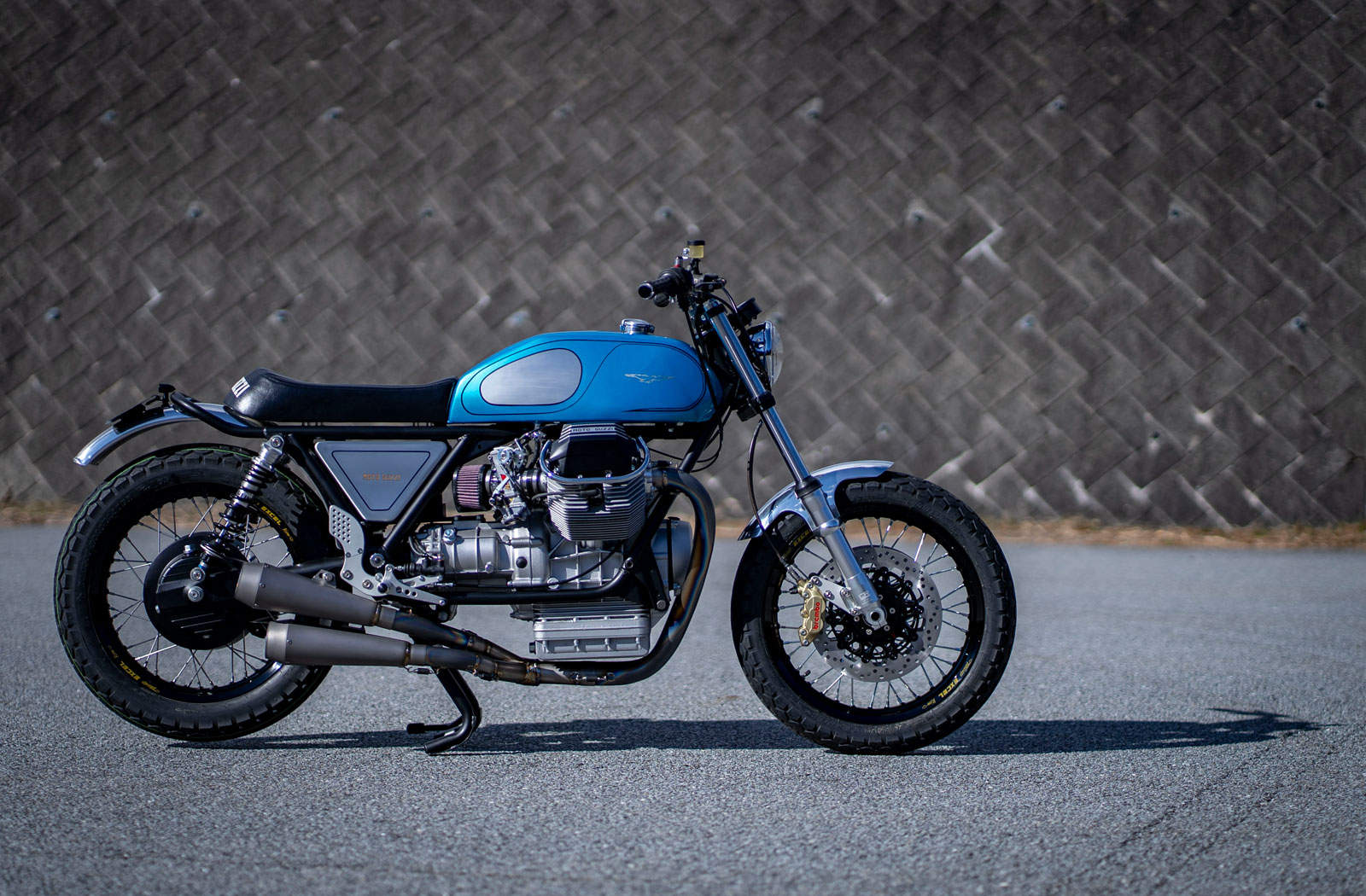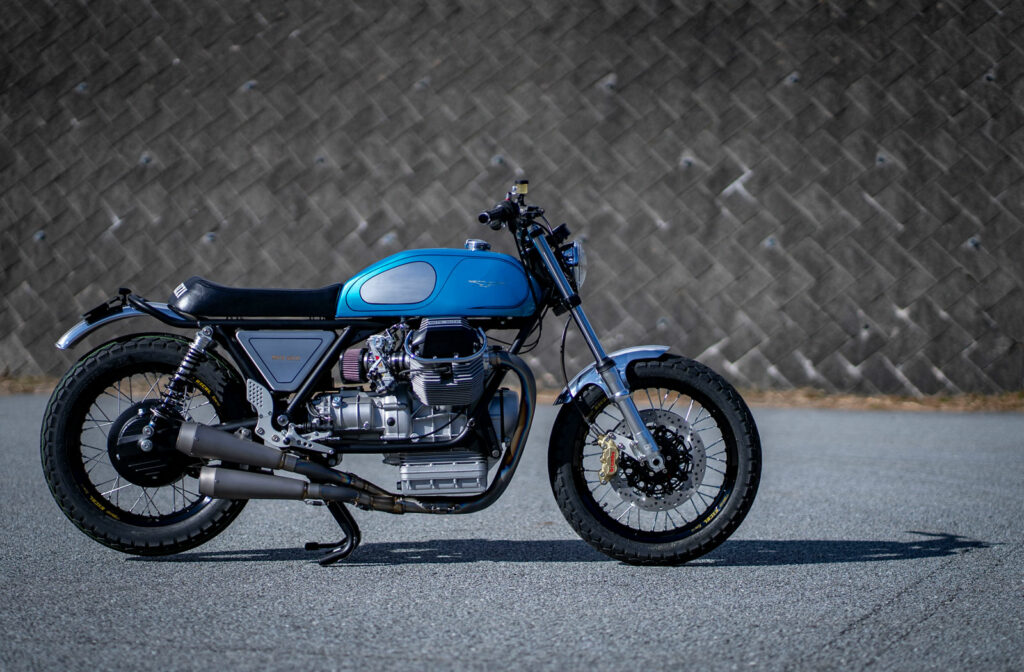
In the 1970s books like ‘Zen and the Art of Motorcycle Maintenance’ became known as intelligent entertainment, the bike and its journey, merely the vehicle for revealing life lessons. For the 21st century, however, we prefer moving pictures and if you log onto YouTube the build videos of Japan’s 46 Works are the modern-day equivalent of that great book, a true meditation on the making of an astonishing motorcycle. And just last week proprietor, Shiro Nakajima, dropped the final instalment of his fifteen-part build series of a 1987 Moto Guzzi Le Mans 1000. Tens of thousands of people have logged on to watch him work his craft for nine months on this one machine, and the finished result is simply incredible.
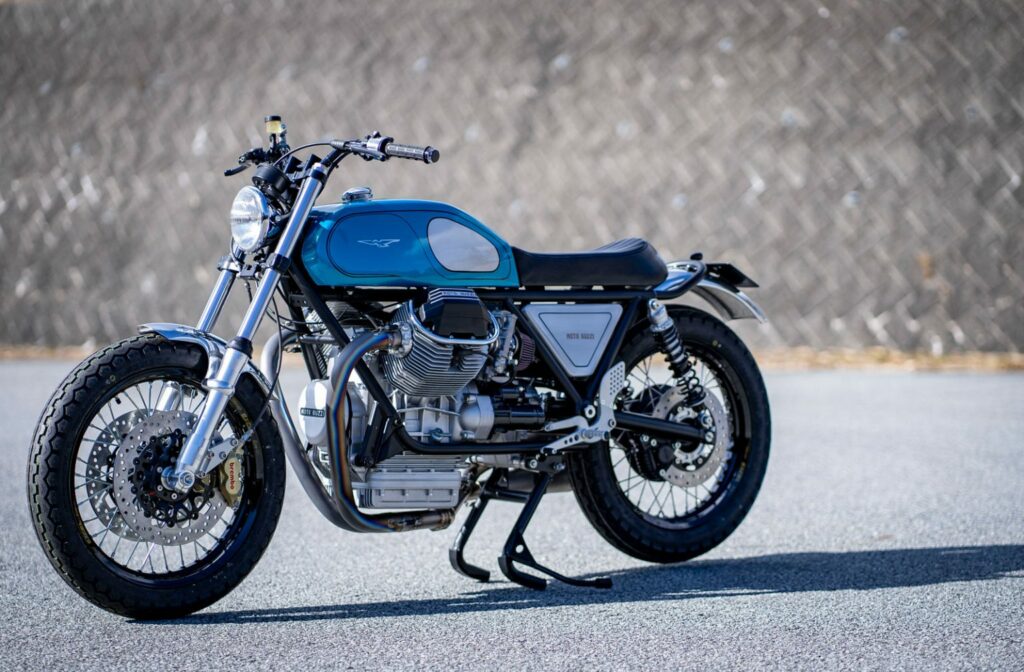
This is not the first time that master builder Nakajima-san has detailed the entire build of a bike in meticulous detail as part of a YouTube series. And it appears their popularity only continues to grow, as each video, around 10-20 minutes in length, shows the creation of perhaps just one single piece for the bike’s build. For those who have no interest in motorcycles, this might seem incredibly boring, but just tune in and you cannot help but be blown away by the man’s ability, whether it be moulding metal, building an engine or using a lathe to make a simple and yet ingenious part.

Having built his name working for others, Nakajima-san returned to a workshop at the base of Mt. Yatsugatake and here he not only builds one-off bikes that take home trophies at Japan’s biggest shows, but he also creates custom cars, furniture and other pieces of incredible art. The old Guzzi rolled into the shop and up onto the lift as a frame with wheels, an engine and basically nothing else. Instantly the meticulous nature of the master’s work is on display, as he cuts back the headstock to create his own upper section, creating a lower and more stylish piece, that also improves the big Italian’s geometry.
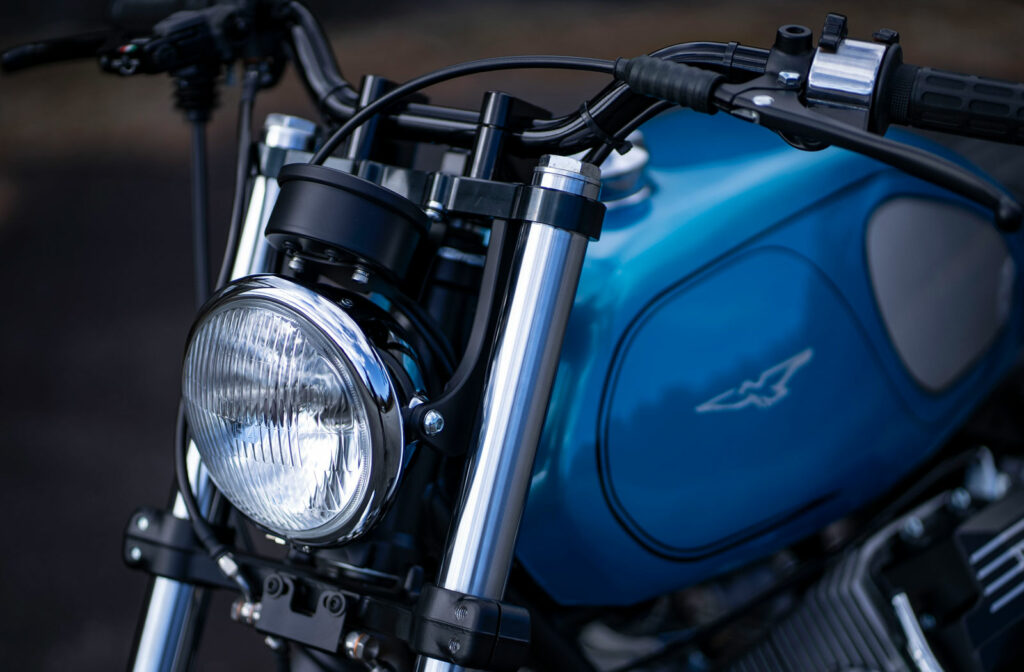
The main goal of this build was to lower the weight and drastically improve the slow handling of the Le Mans, allowing it to carve the winding mountain roads that dot the local area. So, with modern bearings in the new lowered neck, a custom steering stem allows the stock triple trees to go back on, and through these are dropped a pair of CR Suspension replica Ceriani forks. These not only look the business but are a huge improvement over stock, and are matched up to some high-end Ohlins STX 36 shocks for the rear.
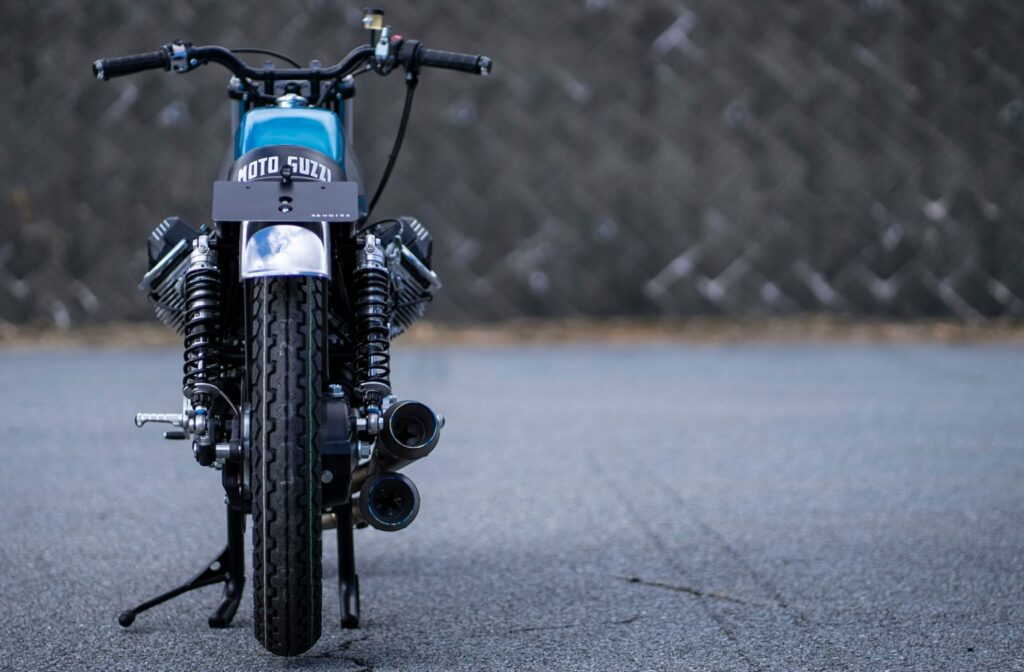
The rolling stock is vital on a build like this, and the look is timeless, with the factory hubs rebuilt to accept new stainless spokes that lace to a set of 18in Excel rims, all wrapped up in Dunlop Roadmaster tyres. Back over to one of his many old-school machines, and Nakajima-san fabricates a set of caliper mounts, which allow him to adapt twin 4-pot Brembo calipers to the front end, clamping a set of drilled Sunstar discs.
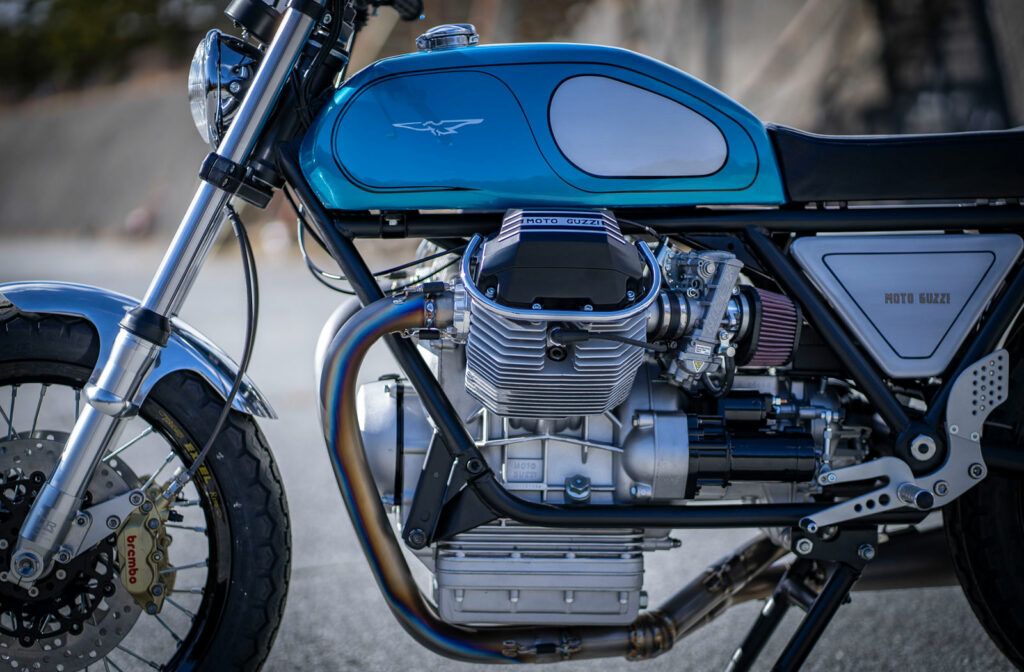
The master cylinder is from Brembo too, with the back end also being totally reworked to ensure serious stopping power. Much of the video content focuses on the milling and machining of the little fixtures and fittings to bring these conversions together, and the detail is remarkable.
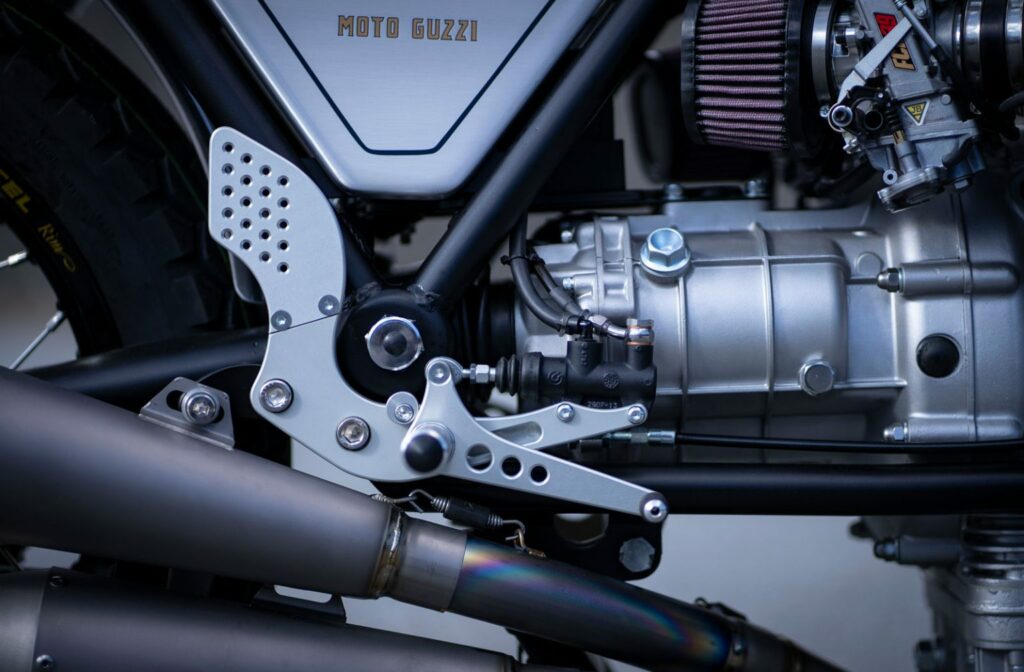
Time to take on that glorious V-Twin engine, and when I say that Nakajima-san builds his motors from scratch, I do mean every last part. The cases are broken down and blasted and then the heads and cylinders are all machined to perfection. Every last seal and gasket is meticulously installed, the torque specs are spot on and all new parts are used, from pistons to valves, it is quite simply better than factory! To help up the power and improve throttle response a pair of big Keihin FCR 39 flat slide carbs go on wearing K&N filters. And the ignition side of things comes into the modern age, with a Dyna ignition and Enduralast alternator.
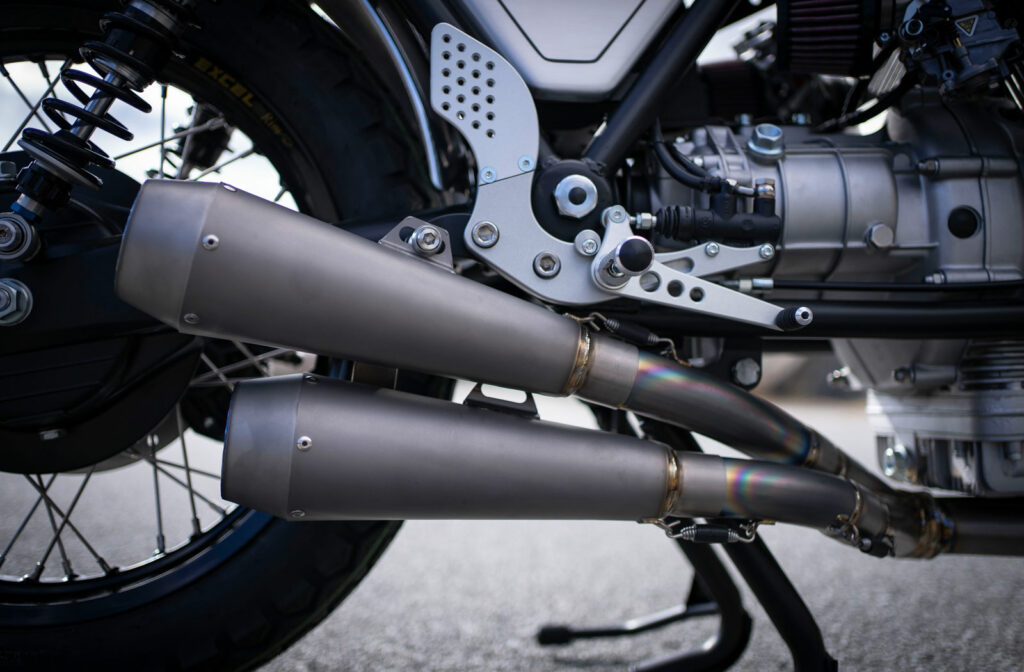
But the big fabrication jobs start with that incredible, full titanium exhaust, which finishes out with a set of 46 Works’ own mufflers. Once you’ve watched Nakajima-san work with metal, you’ll never underestimate what an art it is, and the lightweight titanium for the exhaust is then matched with uber-light aluminium for the bodywork.
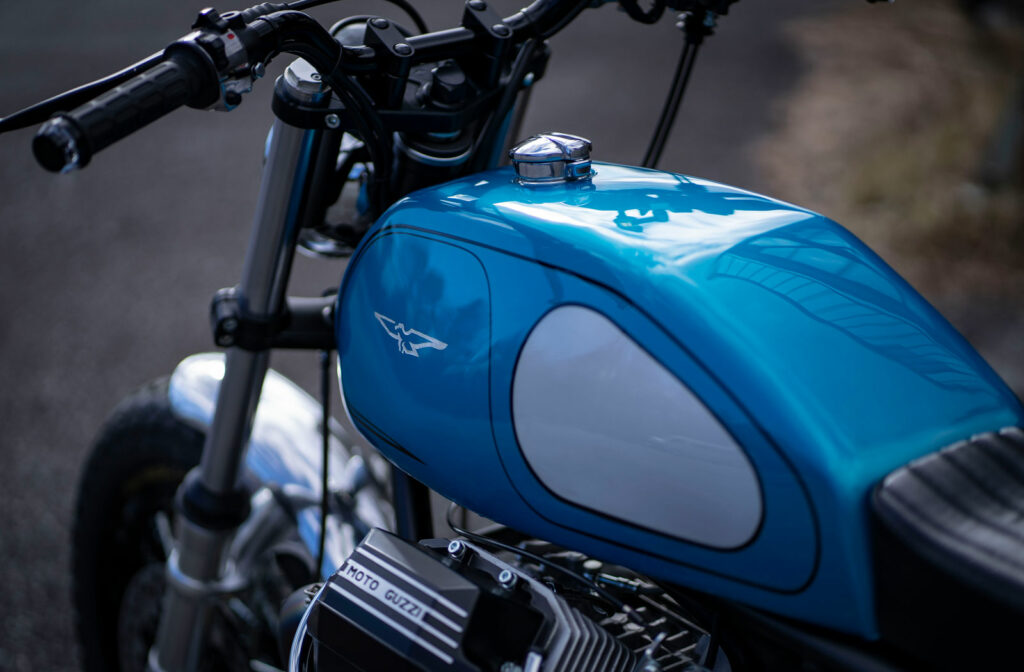
The entire fuel tank for example is handmade from sheets of alloy, there is no mock-up to serve as a guide, just a master and the old-school tools of a true craftsman. The fenders follow, and you’ll marvel as you watch him make the side covers and their clever mounting system, there are endless tips for the budding builder to learn from.
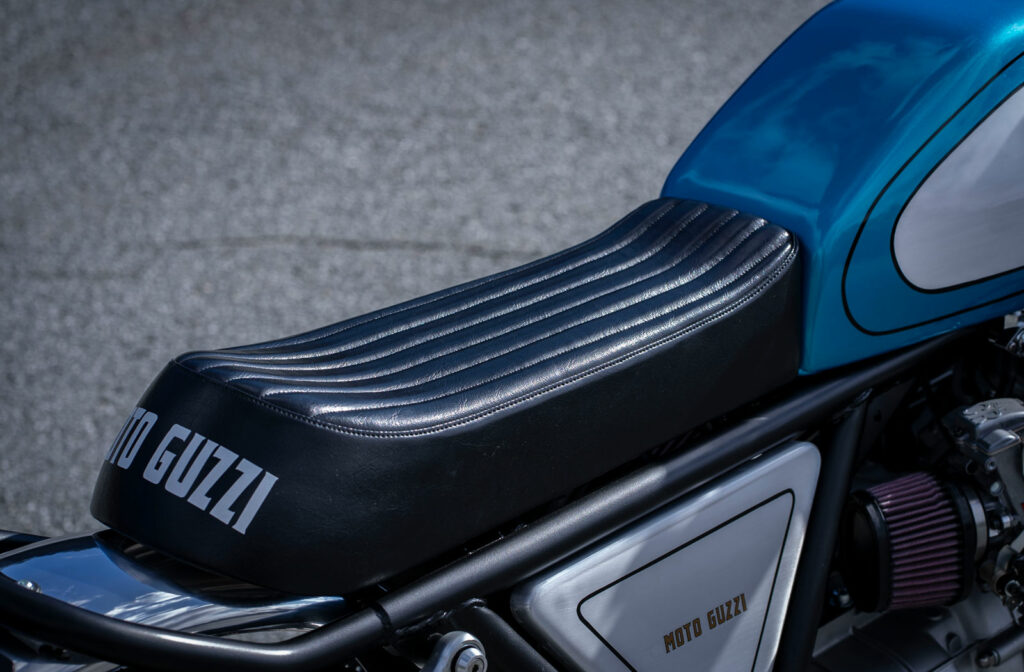
With the big fabrication jobs finished, the hand-formed seat pan is sent off to Razzle Dazzle to be upholstered in vintage black leather. While the tins go to Stupid Crown for painting, the blue with raw alloy and simple black pinstripe continue the timeless feel of the bike, while adding enough flair to catch many a gaze at the Mooneyes Show.
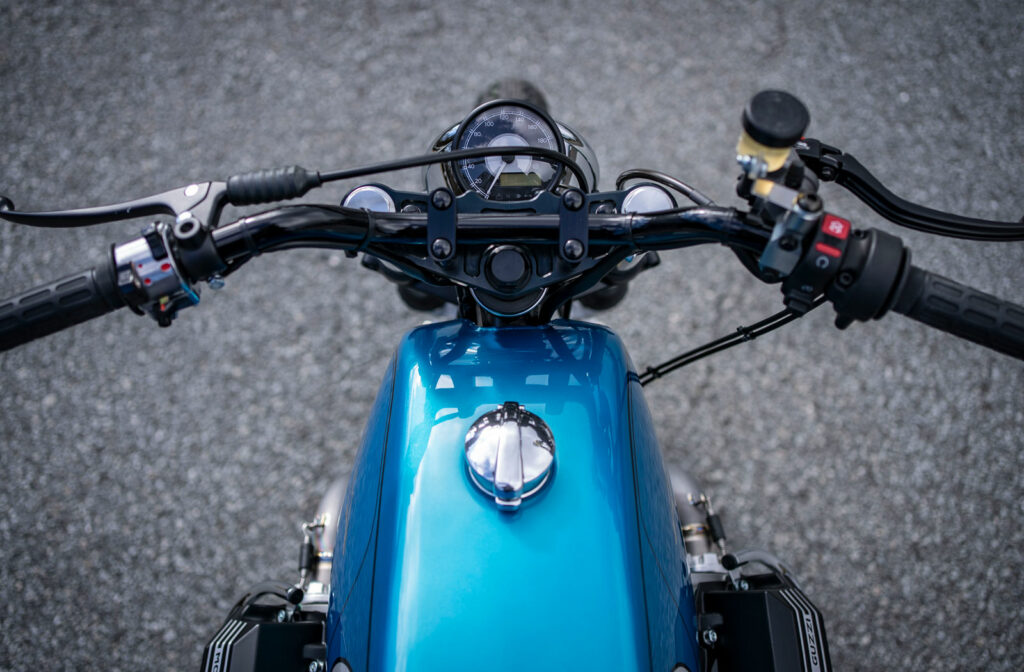
All of the little details are there too, the handmade footrests are meticulously fashioned, and when outside parts have to be bought, only the best from Motogadget and Daytona will do. The finished Moto Guzzi is a gift for the senses, beautiful in form and function, but the other great offering from 46 Works are the videos, you simply have to tune in.
[ 46 Works ]

